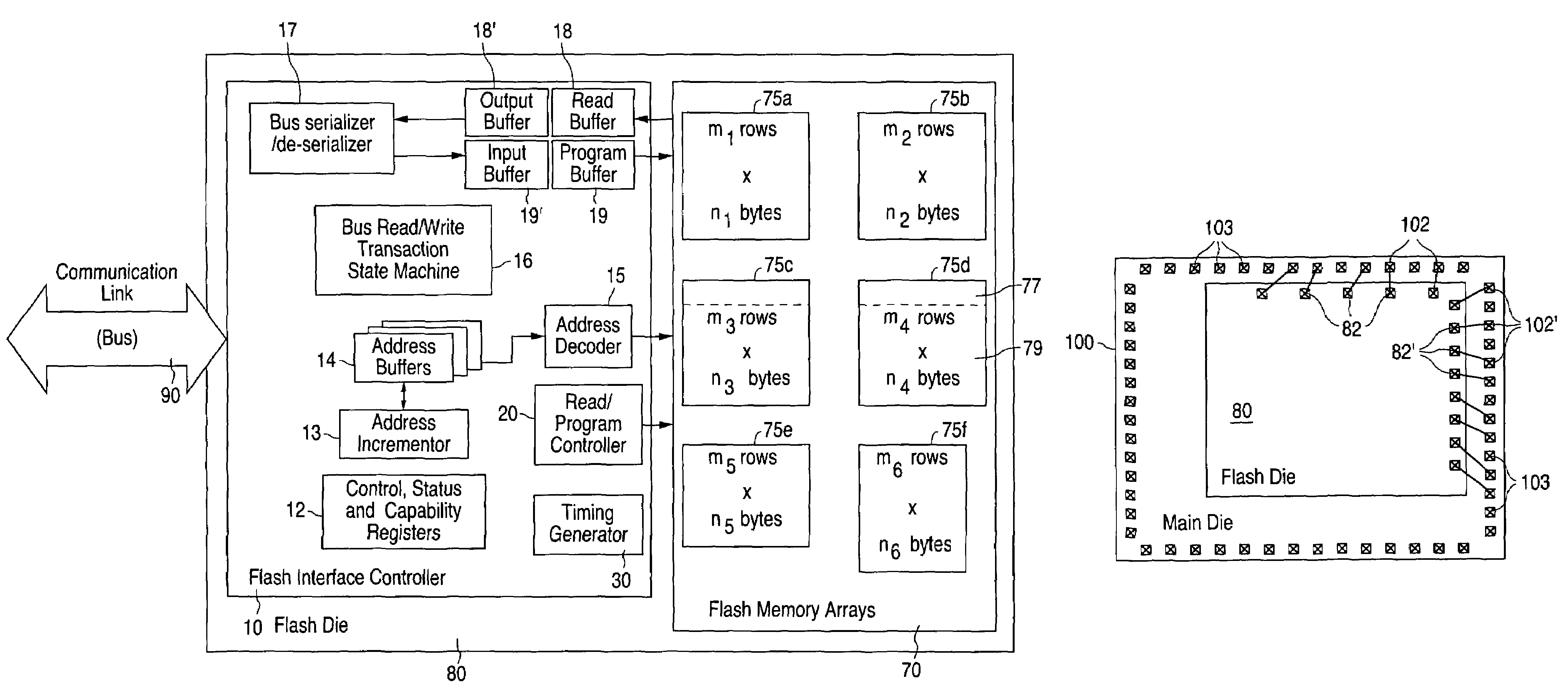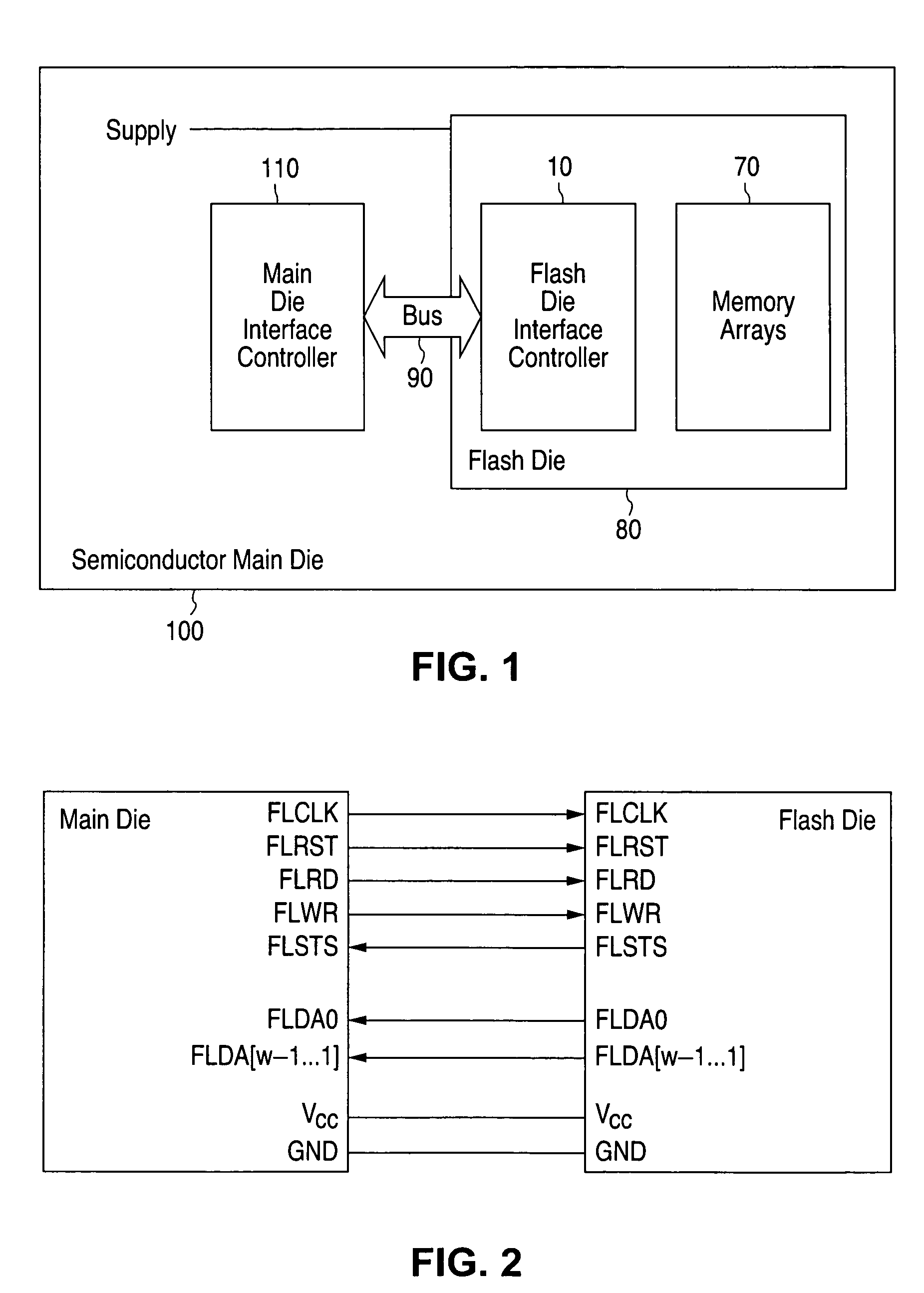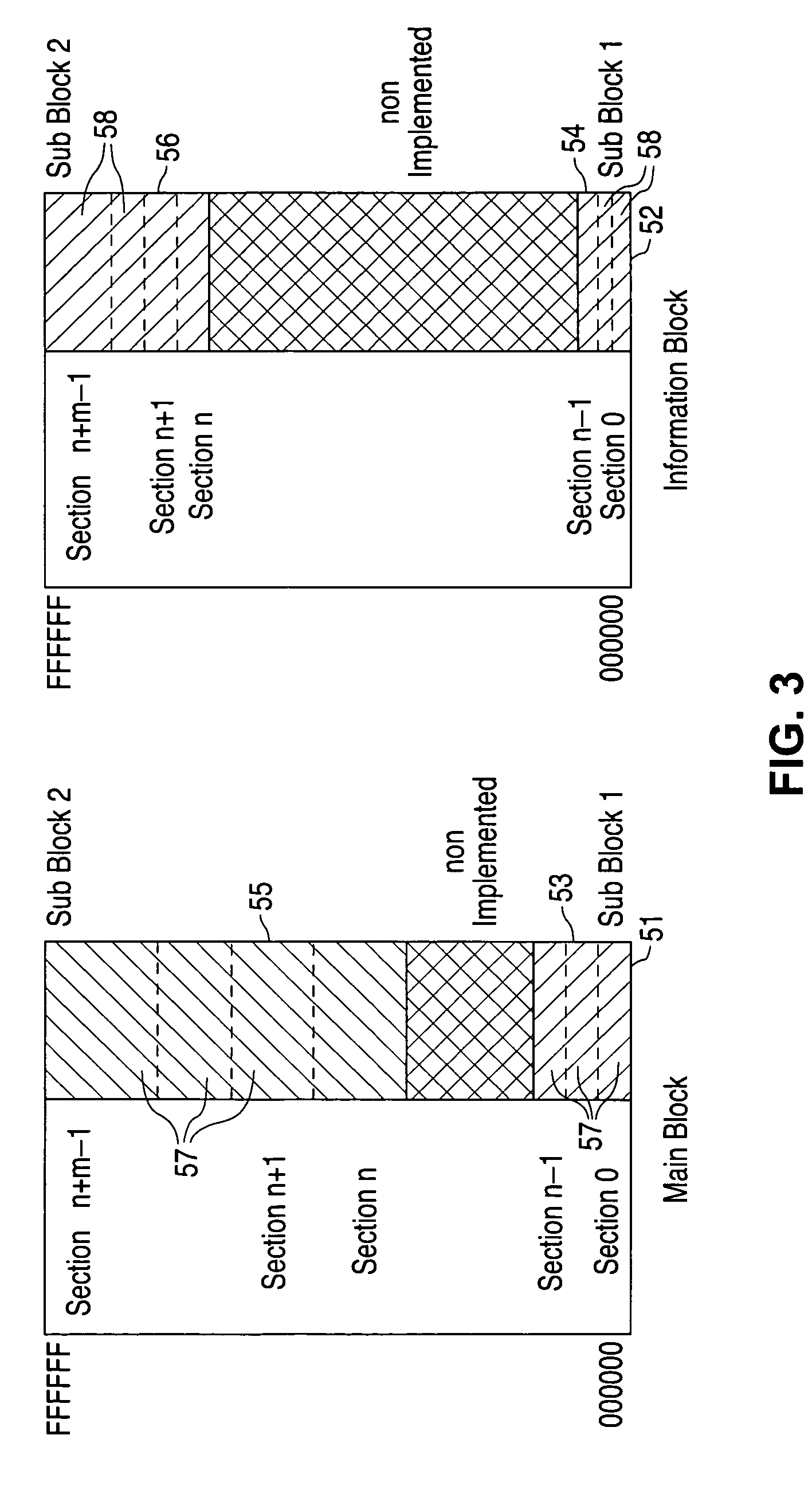Memory interface optimized for stacked configurations
- Summary
- Abstract
- Description
- Claims
- Application Information
AI Technical Summary
Benefits of technology
Problems solved by technology
Method used
Image
Examples
Embodiment Construction
[0041]FIGS. 1 through 10B, discussed below, and the various embodiments used to description the principles of the present invention in this patent document are by way of illustration only and should not be construed in any way to limit the scope of the invention. Those skilled in the art will understand that the principles of the present invention may be implemented in any suitably arranged memory interface system.
[0042]The present invention facilitates designing a connection and communication between a semiconductor device, such as a digital processor, and a nearby memory device, such as a flash memory, by providing a standard interface that is adaptable to a great variety of device types, at either side, to a variety of operational parameters and to a wide range of widths of the communication link between them. The interface enables design of a relatively standard operation program for the semiconductor processing device to efficiently communicate with the memory device, which pro...
PUM
 Login to View More
Login to View More Abstract
Description
Claims
Application Information
 Login to View More
Login to View More - R&D
- Intellectual Property
- Life Sciences
- Materials
- Tech Scout
- Unparalleled Data Quality
- Higher Quality Content
- 60% Fewer Hallucinations
Browse by: Latest US Patents, China's latest patents, Technical Efficacy Thesaurus, Application Domain, Technology Topic, Popular Technical Reports.
© 2025 PatSnap. All rights reserved.Legal|Privacy policy|Modern Slavery Act Transparency Statement|Sitemap|About US| Contact US: help@patsnap.com



